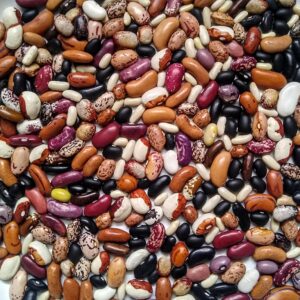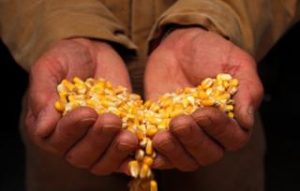
The following article i s featured in the Organic Farming Research Foundation’s Winter 2011 Issue Bulletin.
s featured in the Organic Farming Research Foundation’s Winter 2011 Issue Bulletin.
The day after the State of Organic Seed Symposium last February, a farmer approached me in the hallway of the Upper Midwest Organic Conference. He was not a newcomer to farming by a long shot, but he was relatively new to organic. He’d been sitting in on a workshop session summarizing challenges in organic seed, and he told me that seed issues were one of the things that drove him out of conventional farming and towards organic.
He ticked off the list of reasons why: disappearance of independent seed dealers, dwindling seed choices, and pressures to buy the “GMO herbicide-seed package deal.” While he initially thought seed issues would be easier in organic, he had begun to understand that organic farming carries its own set of seed challenges. He summed up his feelings by saying, “If we can’t get the seed right today, the rest of it will be wrong tomorrow.”
While seed and genetics are fundamental to food production, organic seed has yet to gain solid footing as a structural element in organic farming systems. Despite the significant improvements in organic production methods and growth in the organic market since the Organic Foods Production Act was signed 20 years ago, organic seed systems have struggled to survive much less celebrate success. What this means is not only are we losing a key input in the organic integrity chain, but more profoundly, we are lacking the advancement of genetics that have the potential to fundamentally shift organic systems in a positive direction.
The USDA National Organic Program (NOP) requires the use of organic seed, with the exception that conventional untreated seed may be substituted when “an equivalent organically produced variety is not commercially available” (§205.204). Information regarding actual on- farm use of organic seed as well as the rate of allowances (also referred to as derogations) made for conventional seed substitution is unavailable, as to date there is no system for reporting or tracking this data. This lack of reliable data is one of the greatest barriers to the success of organic seed systems. In 2008, after considerable public comment, plus input from certifiers, seed companies, and farmer advocacy groups, the National Organic Standards Board (NOSB) recommended the creation of a “two-way” national database. This data would inform growers of organic seed availability, identify non-equivalency and lack of organic seed availability by tracking the allowances given by certifiers to farmers to plant conventional seed. So far, the NOP has made no formal response to this specific recommendation or to other guidance on seed matters made by the board. Instead, the industry relies on anecdotal accounts of seed availability from certifiers, seed companies, and farmers to track organic seed use. Good regulation requires good information, and in the U.S., the industry is seriously lacking information on organic seed. Nevertheless, anecdotal information coupled with other independent data sources make clear that the organic industry is nowhere near universal organic seed usage. In the Organic Seed Alliance’s State of Organic Seed (SOS) 2010 survey 1 of organic farmers across the country, only 20 percent reported that they are using 100 percent organic seed.
The remaining 80 percent of respondents most often pointed to a lack of varietal availability or appropriate genetics (equivalency, in NOP language) as the number one reason they were not using organic seed. Analysis of the survey data suggests that facts on the ground are likely worse, because producers who are having trouble sourcing organic seed would be less likely to complete the survey. Regardless, we know that farmers are either struggling to find organic seed or, when they do find it, they are hesitant to use it. Seed companies say that citing a “lack of equivalent varieties” may serve as a veiled excuse for not wanting to pay a premium on organic seed. The NOP has made clear that price cannot be a factor in determining commercial availability, but companies complain that their own sales data points to cases where farmers purchase conventional seed instead of organic varieties that are essentially equivalent or even the exact same variety. Farmers admit that, regardless of the rule, they factor “cost” into their assessment of “commercial availability.” Forty-one percent of the farmers responding to the SOS survey reported that price has been a “moderate” to “significant” factor in their decision to plant non-organic seed.
This creates a conundrum. Seed companies say that farmers’ hesitation to purchase organic seed is the primary reason why they are reluctant to increase organic seed investment. For seed companies, developing organic seed lines requires significant commitment and outlays due to adding organic infrastructure, higher production costs, plus the cost and added expense of certification for organic handling.
Farmers, on the other hand, struggle with the real problem of inadequate seed supply, especially in particular crops and sectors. Forage growers, for example, often cannot find an adequate organic seed supply. While there may be a few dozen carrot varieties produced organically, the diversity of regions, farms, farmer needs, and consumer preferences requires considerably greater diversity than currently exists.
Risk is another problem for organic producers. Switching from a conventional variety that works “well enough” to an organic variety that costs more but is untested is not an easy decision for a farmer to make, especially when their livelihood and reputation with customers are at stake. While certifiers understand this, and commonly recommend that farmers conduct a thorough search and document their efforts to find organic seed from additional sources, they rarely encourage (and are not legally bound to require) that the farmer plant small test plots of organic varieties to trial their efficacy as a way to ease the transition. Only 32 percent of farmers in the SOS survey reported that their certifier had recommended variety trials, yet this is a basic activity that would clearly give farmers valuable information. Trials are a useful tool for all farmers looking to improve their systems, and resources exist to help farmers plan and manage organic variety experiments — groups such as Organic Seed Alliance and Practical Farmers of Iowa can help guide farmers through this process.
Organic certifiers are perhaps in the least enviable position. While many certifiers are aware that the NOSB has developed recommendations for increasing seed usage, they have received neither guidance from the NOP nor training about organic seed that might better serve the operations they certify. When a farmer shows the certification inspector three catalogues and then shows a sales receipt for a conventional seed variety that those catalogs don’t have organically, it is difficult for a certifier to do anything other than permit the allowance to use non-organic seed.
So, how can the industry get beyond these fundamental issues? First, we have to understand the value of organic seed. Farmers know that plant genetics are the first front in addressing environmental biotic and abiotic challenges like pests, diseases, weeds, and climate stress. Organic seed has the potential to be bred specifically for adaptation to organic conditions. Research shows that varieties do not perform equally across conventional and organic production systems. Vibrant public breeding programs and a healthy organic seed industry can provide organic farmers and their customers with more productive, nutritious, and resilient crops. This will only happen if the farmers participate by trialing and using organic varieties and by not avoiding organic seed based upon cost premiums that are in line with the cost premiums they themselves earn over conventional product.
Organic food companies have a role as well, particularly by encouraging farmers to use organic varieties. When processors require farmers to use specific varieties, it may be feasible to work with the seed company that owns those varieties to produce the seed organically. For example, a frozen vegetable processing company is likely to require that their producers use a particular variety of green bean. At times, that variety may not be available organically in sufficient quantities. But if those companies were to engage the seed producer and explain that their growers would be using hundreds of pounds of this green bean seed, the market would respond — not only the conventional suppliers, but other innovators competing for a piece of that market. The organic food industry can also play a key role by investing in public breeding initiatives and other research in organic seed. Commodity check-off programs, which support research and development in conventional agriculture, are not availablein the organic sector so our industry needs to find innovative ways to invest in research based on our understanding of the value it brings to our products and customers.
Finally, it is time for the NOP to begin responding to the National Organic Standards Board’s recommendations on commercial availability of organic seed. Organic farmers and certifiers lack information and guidance, and without decisive action from the federal program, it is no wonder that some farmers question why they should bother trying to source and use organic seed.
The development of a viable organic seed sector has the potential to provide much more than simply closing an allowance in the NOP rule. Organic producers have fewer “spray-on solutions.” As such, seed is their first front for countering environmental challenges from pest outbreaks to plant diseases to adverse weather. Farmers know this to be true. In the State of Organic Seed Survey, 83 percent agreed that varieties bred for organic system management are important for the overall success of organic agriculture.
Achieving success will require working together to create strong organic seed breeding programs to develop varieties that will stand up to the demands of organic farming systems. It will require advancing a regulatory structure dedicated to supporting organic seed as a system goal. It will also require development of data tracking tools to assess seed usage and to help farmers locate viable seed options. By addressing these needs, we will foster the emerging organic seed industry and provide organic family farmers with the confidence they need to move toward 100 percent reliance upon organic seed .
Matthew Dillon is an advisor to Clif Bar Family Foundation (CBFF) and coordinates the Seed Matters initiative for CBFF. This article appears in OFRF’s Winter 2011 Issue Bulletin.
